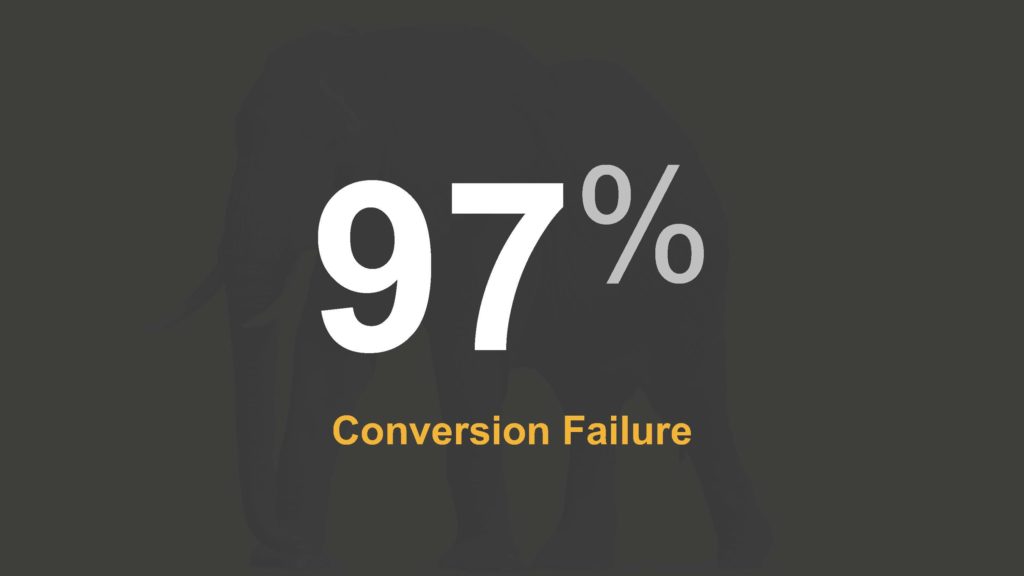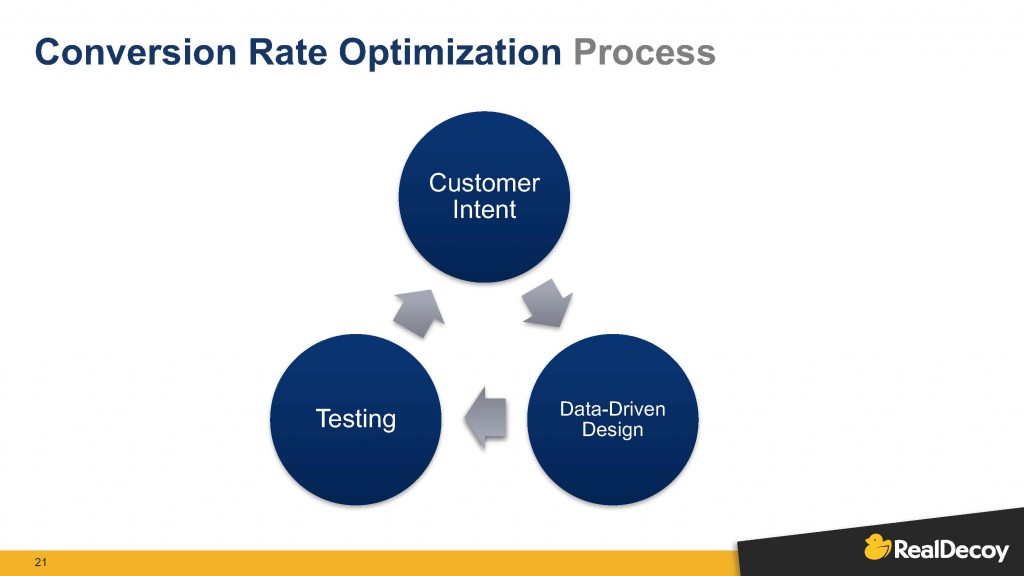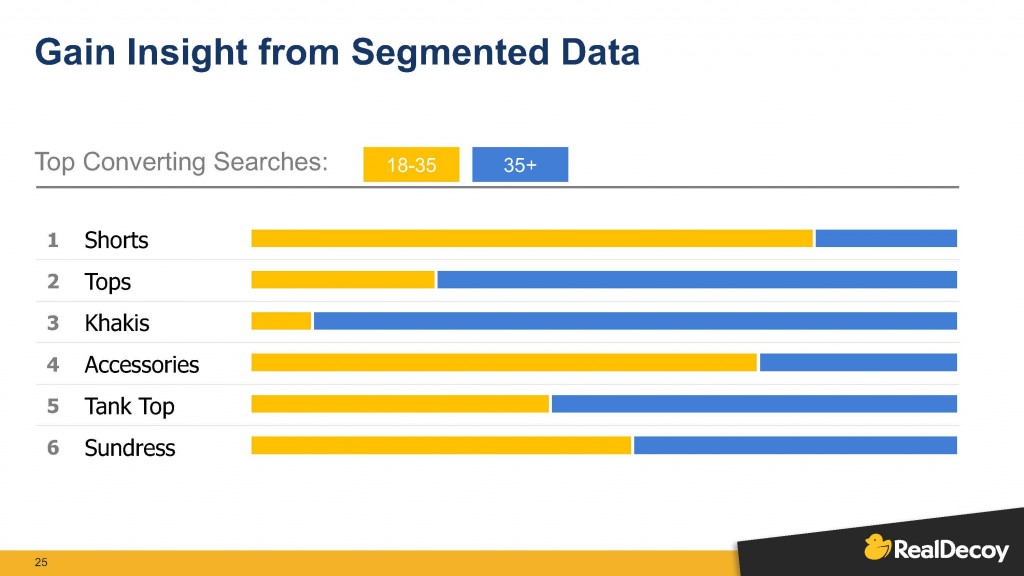POST CATEGORIES
April 7, 2017
The secret to CRO may surprise you. Many online retailers fail to recognize this key to improving ecommerce conversion
By: Graham Machacek Director of Conversion Consulting, RealDecoy
With a background in social psychology research, clinical psychology research and market research that informs his years of experience at RealDecoy, Machacek reveals the key ingredient for boosting e-commerce conversion. Here is his summary blog providing an overview of a recent presentation in Chicago. (You can also view his slide deck and accompanying voiceover here.)
When it comes to getting more e-commerce conversions, every online retailer is looking for that “secret sauce.” A special ingredient that helps a business stand above the rest.
Think of McDonald’s promoting the “special sauce” on its Big Mac. Or Kentucky Fried Chicken and its “secret blend of 11 herbs and spices.”
You’re looking for that secret sauce too, right?
So who are you? You’re likely among a group of e-commerce professionals that includes primarily VPs and Directors of E-Commerce, Merchandizing, and Marketing. You need to find ways to improve e-commerce conversions because the success of the company you work for—and your own success—depends on it.
But before I reveal to you the secret sauce for boosting e-commerce conversions, looking back to those two famous brands should prove instructive.
Secrets have already been revealed!
It may come as a surprise to some that McDonald’s has already revealed exactly what’s in its Big Mac special sauce. And a nephew of Colonel Harland Sanders reportedly gave the Chicago Tribune a family scrapbook showing a handwritten list of those secret 11 herbs and spices.
Looking ahead, it’s not merely knowing the secret to boosting e-commerce conversions that will make a difference to e-commerce businesses. Like a Big Mac’s special sauce or KFC’s 11 herbs and spices, it’s all about making the most of this secret.
And the secret sauce to boosting conversions is… (drum roll)
Your customers.
While that may sound obvious to you—a business without customers is hardly a business—there’s, of course, more to it.
It’s about understanding your customers—and understanding site visitors on their way to becoming your customers. It’s about customer intent. It’s about discovering what your customers think. It’s about gaining insight from data segments on your customers. It’s about offering a personalized experience to your customers.
It’s all about your customers. That’s the secret sauce for boosting e-commerce conversions.
There’s an elephant in the room. A very large elephant.
As an e-commerce professional, you see tons of stats and percentages. Everything from cart abandonment figures to bounce rates. The most significant number is arguably this elephant-sized one: a 97% conversion failure rate.
That’s the flip side of a 3% conversion rate online retailers typically experience. And, even though the B2B world receives, on average, an 8% conversion rate, a 92% failure rate is hardly worthy of a high-five either.

Consider this elephant-sized e-commerce statistic: a 97% conversion failure rate. That’s the flip side of a 3% conversion rate online retailers typically experience. This 97% failure rate also reflects the vital importance of learning more about your customers.
Should we simply accept these figures as unchangeable realities? Will more and more be spent on “site visitor acquisition” tactics while conversion rates remain stuck at the same levels as they have for the last decade? Or will a focus on customers allow e-commerce conversions to increase?
Why such low conversion rates to begin with?
A couple of quick stats to ponder:
A 1-second delay in page response can result in a 7% reduction in conversions.
Of all e-commerce carts, about 70% are abandoned.
Whether at the very start of a customer’s e-commerce experience or near the end, understanding why customers do what they do is essential. That’s where customers’ behavioral intent (or purchase intent) comes in.
Defining and understanding customer intent
Here’s a key definition worth remembering:
Customer intent is the specific purpose for which a user is interacting with your site.
Sounds straightforward and logical, right? It’s also vitally important.
Through fully understanding customer intent, companies can improve conversions much faster. It’s like having a flashlight in a mine. Without one, you could bump around in the dark and eventually find your way. But having and using that flashlight lets you get from A to B so much faster.
Understanding customer intent is the first of three main phases in an effective conversion rate optimization (CRO) process. Data-driven design and testing make up the second and third phases of this iterative process.

A conversion rate optimization process should comprise customer intent, data-driven design, and testing. Unfortunately, many businesses jump straight into design, then testing, without truly understanding customer intent. Like having a flashlight to light the way in the dark, understanding customer intent helps companies improve conversions much faster.
Unfortunately, many businesses with a conversion rate optimization process jump straight to UX design and testing before truly understanding customer intent.
Moving directly into selected best practices (for example, altering the color of call-to-action buttons) will deliver outcomes that can be tested. However, this kind of testing does little to help an e-commerce business better understand its customers and their intent.
How can you be expected to “optimize” when you don’t know who you’re optimizing for?
Gaining insight from segmented data
Understanding customer intent requires a mix of both qualitative research (such as creating journey maps) and quantitative research (such as segmenting data). Companies struggle with gaining insight from segmented data—Damn it, Jim! I’m a marketer, not a data scientist!—but it’s critical. Because segmented data delivers such high value.
Right now, you may or may not be using commerce or site search technology that incorporates machine learning. And if you’re not using machine learning, then you definitely need to be analyzing customer intent yourself. Which is fine.
Either way, it’s quite likely you need to dig deeper into your customer data using Google Analytics or whichever data insight platform you prefer. Specifically, you’ll want to segment your data to gain a greater understanding of particular customer groups that are of high value to your company.

What’s the value of being able to segment data? Well, it could tell you with certainty that, say, 81% of your converted searches for shorts were from 18 to 35-year-olds. And 93% of converted searches for khakis were from customers aged 35+. That’s powerful, useful data.
Which customer segments are driving the bulk of e-commerce conversion for your company?
Mobile vs desktop. New vs returning visitors. Anonymous vs logged-in shoppers. Web browsers. Age groups. Geographic regions. Customer acquisition sources. User purchase behaviors. These are among the most common—and powerful—ways you can segment data to gain insights.
When you do, you’ll better understand your customers’ purchase intent, and pinpoint new e-commerce conversion opportunities.
As a real-life example, one RealDecoy customer (a major financial institution) segments its loyalty reward program data to determine which customers have “browse” or “buy” mindsets. They use this insight to decide which promotions should be targeted at both types of customer segments using Oracle Commerce Experience Manager.
The bottom line? Whatever approach you take to gain insight from segmented data, if you want to evolve as a business and increase your conversion rate, you need to put the work in to truly understand customer intent.
Putting data into action through web personalization
Building a personalized website experience doesn’t happen overnight. There needs to be a maturity path to website personalization.
The complexity of its proper implementation is part of the reason only about 20% of online retailers are using website personalization to improve their conversion rates. Yet the payoff is substantial, with 84% of those same retailers who have personalized their website reporting an uplift in conversion rates.
The three biggest website personalization mistakes companies are making
Mistake #1: Product data that confuses shoppers.
Mistake #2: Underestimating search relevancy.
Mistake #3: Limiting personalization potential.
Rather than try to explain the relevance of examples such as “chkn brst” and “black shorts” as they pertain to these mistakes, I’ll simply point to my presentation for details, which you can access here.
What website personalization looks like today
Moving on to companies not making those three big mistakes, consider another RealDecoy customer that recognized 25 percent of its online revenue was coming from French language customers.
By integrating language of choice, geo-location and promotional banners into its e-commerce experience, this particular customer was able to start moving along the path to website personalization maturity.
This kind of scenario reflects what website personalization looks like today for many businesses that use rules-based technology. They’re making progress, but it’s just the tip of the iceberg.

E-commerce businesses are starting to move along the path to website personalization maturity. This image reflects what website personalization looks like today for many businesses that use rules-based technology. They’re making progress, but it’s just the tip of the iceberg.
Taking website personalization to the next level
At some point, e-commerce companies need to decide what approach to website personalization is best for their brand and business: Rules-based, manual, human-focused technology? Data-driven, algorithmic, machine-based technology? Or somewhere in between?
The balance you strike between machine-learning and rules-based personalization depends on your strategy and goals. While more companies than ever are considering the role machine-learning personalization should play (using it, for example, to present product recommendations), there are also plenty of ways businesses can better target their customers by leveraging various data sources through rules-based personalization technology.
Consider some of the following “welcome back” examples:
- Purchase history: Businesses can promote products it knows customers bought in the past.
- Buying cadence: Customers who buy the same product at regular intervals can be reminded it may be time to buy again.
- Loyalty points: Site visitors can be presented with how many points they have, and offered suggestions on how they might use them.
Whatever approach you choose, you’re always going to need sharp minds to analyze your data.
Understanding customers is understanding e-commerce conversions
There is, of course, much more to conversion rate optimization than what’s been covered here. Today, for example, you might be concerned only about your customer’s on-site experience. Tomorrow, you may want to know your high-value customers’ off-site preferences—what they do and how they buy on other sites—and how that data can help you better understand what decisions you need to make about high-value segments and categories on your site.
Suffice it to say, when it comes to boosting conversion rates, it’s an ongoing, iterative process.
It’s about making incremental changes based on one’s understanding of customer intent. It’s about using the wealth of data at one’s disposal to draw meaningful conclusions. It’s about using qualitative research to validate those numbers.
My final message? As an e-commerce professional, once you have that base foundation of customer intent understood, only then can you begin to make optimization changes and measure the effectiveness of those changes.
In other words, it’s not just knowing a secret sauce exists—and what constitutes that special ingredient. It’s about applying your knowledge and understanding. And enjoying the rewards!